In 2004 I lived in Vienna, Austria and had discovered the local swing music scene. At one of the many dances I started talking with an older gentleman who danced incredibly well and told me that he used to be a “Schlurf.” I had never heard the term but it sounded funny and interesting. He explained that there were groups of young men and women in Vienna during the Nazi years who would meet in private, dance to American swing music, and opposed the harsh Nazi reality with their behavior and dress. I was intrigued. Who were these young people?
“Schlurf” was but one term used to describe this underground youth culture. Nowadays, the term “swing kids” is usually used to describe the phenomenon based on a 1993 Hollywood feature film of the same name. While not a huge box office success, the film influenced the swing revival of the late 90s and early 2000s by telling the fictionalized story of a group of teenagers in Nazi Germany. The kids themselves called each other “swings,” “swing heinis” (swing dudes), or “swing boys and girls.” The swings were not organized in cohesive groups or clubs, but instead were loose circles of like-minded teenagers in larger cities across Germany, Austria, and other European countries varying greatly in their socioeconomic backgrounds and interests. What they had in common was a love for jazz and an affinity for British and American pop culture which stood in stark contrast to the enforced Nazi culture of German nationalism, uniformity, and military regulation.
The uniformity and military style of the Hitler Youth the Swing kids detested. Photo by August Priesack, courtesy of the German Federal Archives.
Jazz as a musical form appeared in Germany in the 1920s and, as was true globally, became popular as the soundtrack of the Roaring 20s. As the social and political atmosphere grew darker in the 1930s, the new widely popular form of jazz, swing music, made its way across the Atlantic.
Swing was not proscribed by the Nazi regime initially. Authorities at first accepted claims by the German music industry, trying to cash in on the new sounds, that swing was a more ‘cultured’ form of jazz and, if not desirable, at least acceptable for German ears. Soon enough, however, the music’s black roots, its perceived Jewishness, and lack of restraint in the accompanying dances began to raise alarm.
Restrictions on the music and its dissemination came gradually. Broadcasting of jazz was forbidden as early as 1935. In the following years records of individual artists were banned; listening to non-German radio stations was criminalized. Orchestras had to follow strict rules like not exceeding 20 percent of the repertoire to jazz, and some areas outlawed swing dancing and dances.
Swing music per se, however, was never completely outlawed. Propaganda Minister Goebbels knew that music was a necessity in keeping morale up. This led to an odd duality in the way Nazi authorities dealt with jazz. On the one hand, massive propaganda and strict rules were used to keep swing at bay. This “degenerate” “jungle music” played by such people like the Jewish Benny Goodman, whom a publication called the “Pied Piper of New York” with “criminal hands,” had to be suppressed as much as possible.
Advertisement for the exhibit on degenerate art in Salzburg, Austria in 1938. Photo courtesy of the German Federal Archives.
On the other hand, the Nazis attempted to recreate a more Germanic form of jazz music—for entertainment, to boost the morale of young German troops, and to undermine Allied morale by broadcasting pro-German propaganda jazz numbers by the Nazi-sponsored “Charlie & His Orchestra” across the Channel.
Music is hard to regulate and this ambiguity offered many ways to circumvent rules and trick the system. Teenagers, the most ardent followers of a new musical trend, were also hard to regulate and for some of them the anti-jazz propaganda had the exact opposite effect. Not only did it make the music more attractive, it also offered ways to access it. Some flocked to the cinemas to catch anti-American propaganda reels that showed Americans dancing the Lindy Hop so they could learn to imitate the movements. A touring exhibit on “degenerate music” included the playing of American jazz records which, according to one “Schlurf,” could easily be “snagged” after involving the promoter in a conversation.
While Nazis hated jazz and every form it came in, the existence of these swing kids and their lifestyle posed a much bigger threat to their world view. The first “swing cliques,” as they were described, showed up around 1935 in Hamburg, Berlin, and Frankfurt. These teens and young adults that mostly knew each other from school or leisure activities, shared a love for swing, Anglo-American style and culture and were much more interested in self-indulging activities than the uniformity, military drill, and ideology of the Hitler Youth (Hitler Jugend, HJ for short) or the League of German girls (Bund Deutscher Maedel, BDM for short.) The swing kids hence raised many red flags with Nazi authorities, most shockingly, they tended to welcome Jewish teenagers into their midst. Coco Schuman, a Berlin swing kid, famous jazz guitarist, and Holocaust survivor (he was a member of the band “Ghetto Swingers” in Theresienstadt), put the difference in clear musical terms when he pointed out that both military marches and jazz are in common time, however, one cannot march to jazz due to its syncopation.
The way the swings dressed reflected this stance on life. Most boys would wear long, often oversized and checked sports jackets, hats with American-style brims, shoes with thick crepe soles and, in some cities, an umbrella, no matter the weather. The look varied from location and sometimes reflected differences in social background. The “Schlurfs” in Vienna for example were mostly working-class and often had to adjust the look to what clothing was available. What they all had in common was long hair-long enough to touch the collar, and slicked back in what was perceived as Hollywood style. Visually they could not have been in starker contrast to typical Hitler Youth style.
Swing girls had their own look too. They wore make-up, used nail polish, and favored long and open hair—as opposed to the ‘natural’ and braided-hair look propagated by the authorities for the ‘proper’ German girl. Nazis were particularly concerned with the ideal German female, and the way swing girls dressed and behaved showed the world that they did not care about these ideals. They were a threat to regulated order.
Apart from the clothing, the teenagers’ behavior caused outcry as well. The dancing was considered vulgar, inappropriate, and often connected to claims of sexual promiscuity. Further, a key element of their culture was a laissez-faire outlook on life. A cool and laid-back demeanor, modeled after Hollywood movies, went hand-in-hand with a desire to just hang around with no particular aim or goal. They used English words and called each other “Old Hot Boy” or “Hot Old Boy.” They were ironic and flippant. Some would use “Swing Heil!” (instead of Sieg Heil) as a greeting. Some engaged in provocative actions and violent confrontations, mostly with their counterparts in the Hitler Youth.
For many of them, especially those of privileged backgrounds, these actions were not so much a part of orchestrated rebellion and active resistance, but more of a game whose gravity they did not grasp. A Hamburg swing kid, Tommie Scheel, said, “We were going to tell these dumb bastards that we were different, that was all.”
Despite their open display of disassociation from the system, swing kids were not actually political. Their rebellion came more from a teenage desire for self-expression than a resistance mindset. It was more an attempt to “wish away” harsher realities of life with idle conversation, creating a make-believe world through music, and withdrawing from the totalitarian regime growing around them. Their rebellion was in the forms of visual cues, their dress and behavior, but not so much in subversive political action.
Hans-Jürgen Massaquoi, a German-American journalist with African ancestry and a Hamburg swing kid, noted in Stud Terkel’s The Good War:
"The Nazis hated our guts. Any chance they had, they would kick us in the pants or make life miserable for us. There was nothing ideological about us. We were nonpolitical, just anti Nazi regimentation. It was just a total turnoff. We didn’t want to be bothered by this nonsense."
Hans-Jürgen Massaquoi
However, the longer the Nazi regime lasted, the more the swings’ very existence became political. Even if they themselves didn’t perceive it that way, Nazi authorities certainly did.
Measures and sanctions against swing kids varied based on location. In Vienna, the Schlurfs’ lifestyle was criminalized in March of 1940 with a police ordinance to “protect” minors. What followed were years of raids on music events, dance schools, and other informal meeting places. If caught, the youths faced punishments ranging from the public cutting of their hair, forced entry into the Hitler Youth or the Wehrmacht to, in ‘severe’ cases, incarceration in youth concentration camps.
In Hamburg, which had a very active swing culture, an overzealous Gestapo head, helped by the local Hitler Youth who observed and reported on the swing kids, cracked down hard on them.
Here, the teens had been particularly bold in their gatherings, from volunteering for lookout shifts and using those to sit on the rooftops and listen to illegal songs, to organizing dances of several hundred participants. These infuriated the local Hitler Youth who, in February 1940, reported that these dances are “an appalling sight. None of the couples danced normally; there was only swing of the worst sort.” As a result, the Gestapo raided a swing event on March 2, 1940, and 408 people were identified and recorded. That fall, based on these records, 63 swings were arrested.
Waves of raids and arrests over two years had very little effect on the swing kids’ activities, so much so that concerns reached top Nazi brass. On January 26, 1942, Heinrich Himmler, head of the SS, wrote to his deputy Reinhard Heydrich and instructed him that “all the ringleaders … and all teachers with enemy views who are encouraging the swing youth are to be assigned to a concentration camp.” Himmler believed that only brutal measures would “prevent the dangerous spread of this anglophile tendency at a time when Germany is fighting for her existence.”
Overall, 383 people were arrested between October 1940 and December 1942 in Hamburg alone, of which 90 percent were younger than 21 years old. They often endured weeks in jail and brutal interrogations by the Gestapo. Most were sent home at one point or the other, their jazz records confiscated and hair cut short. Not all fared so well. Some were sent to the front lines, suspected leaders were sent to concentration camps as political prisoners, and Jewish swing kids, like Coco Schuman, faced the Holocaust.
The swing youth hardly started out as a political group. In their heart of hearts, they were teenagers who loved American popular jazz connected to ideas of freedom, self-determination, and self-expression. Though a teenage fad in many ways, within the political system of the time, their courage to just be different stands out. I do not know what became of the older gentleman I danced with that evening. But I do hope he still dances wherever he may be.
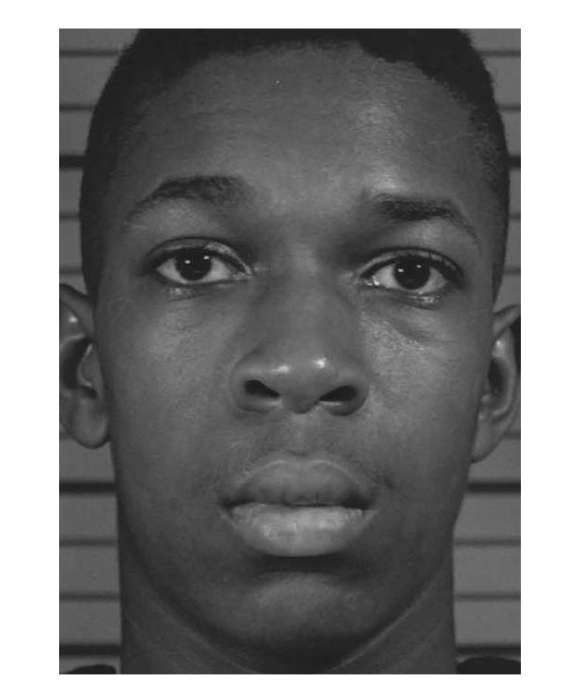
John Coltrane: From World War II to Jazz Genius
Before John Coltrane became recognized as an influential jazz musician, he served with the US Navy band the Melody Masters.
Tanja B. Spitzer
Tanja B. Spitzer, a native of Germany who came to New Orleans a little over a decade ago to study at Tulane University, is an expert on transatlantic history and cultural diplomacy.
Cite this article:
MLA Citation:
APA Citation:
Chicago Style Citation:
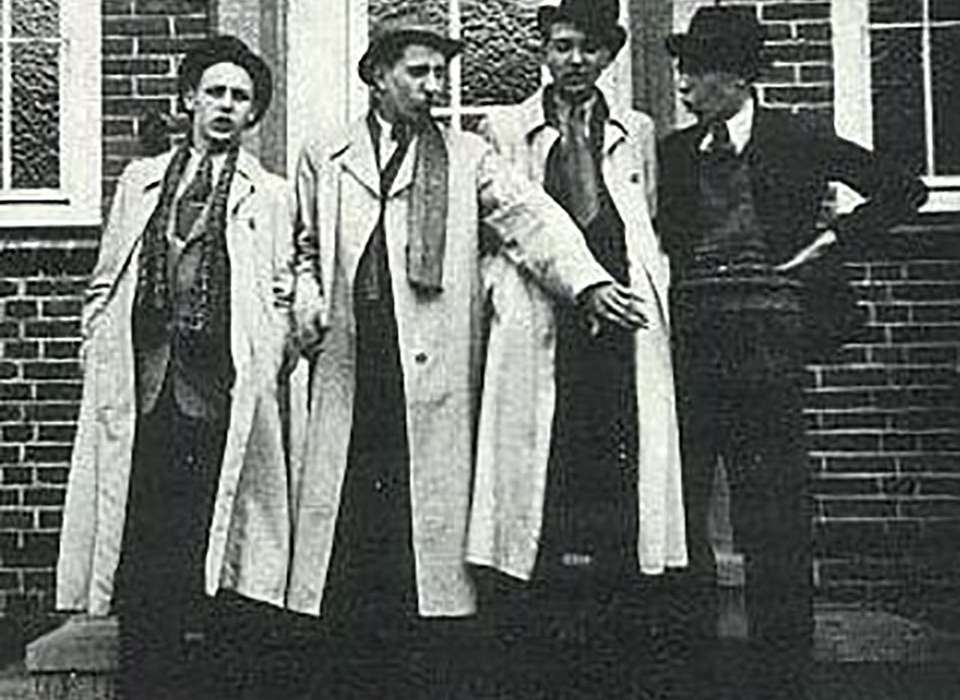
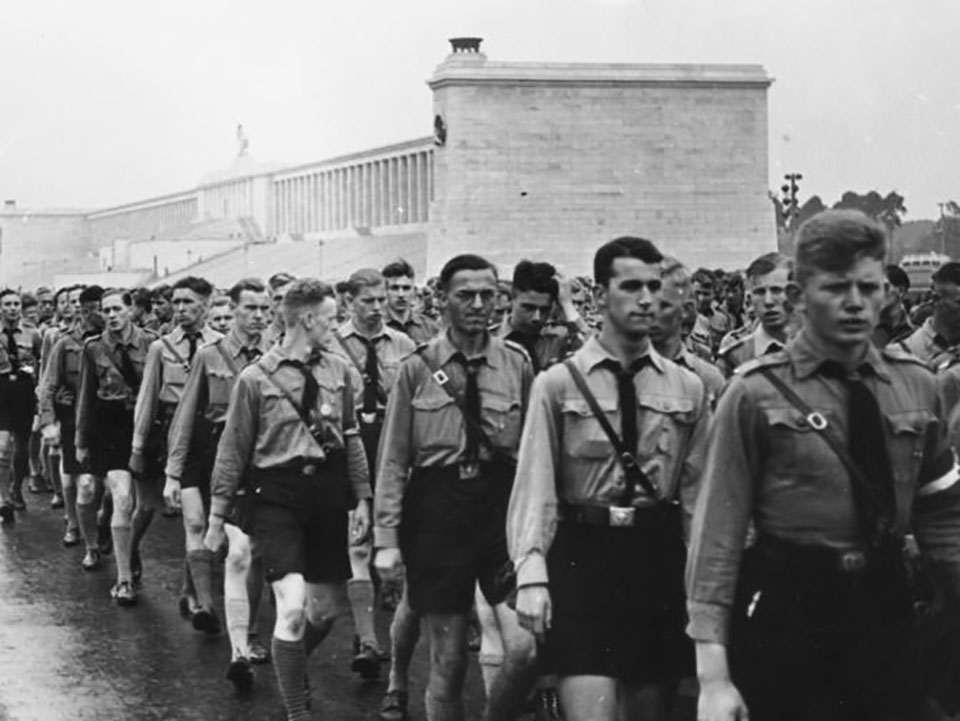
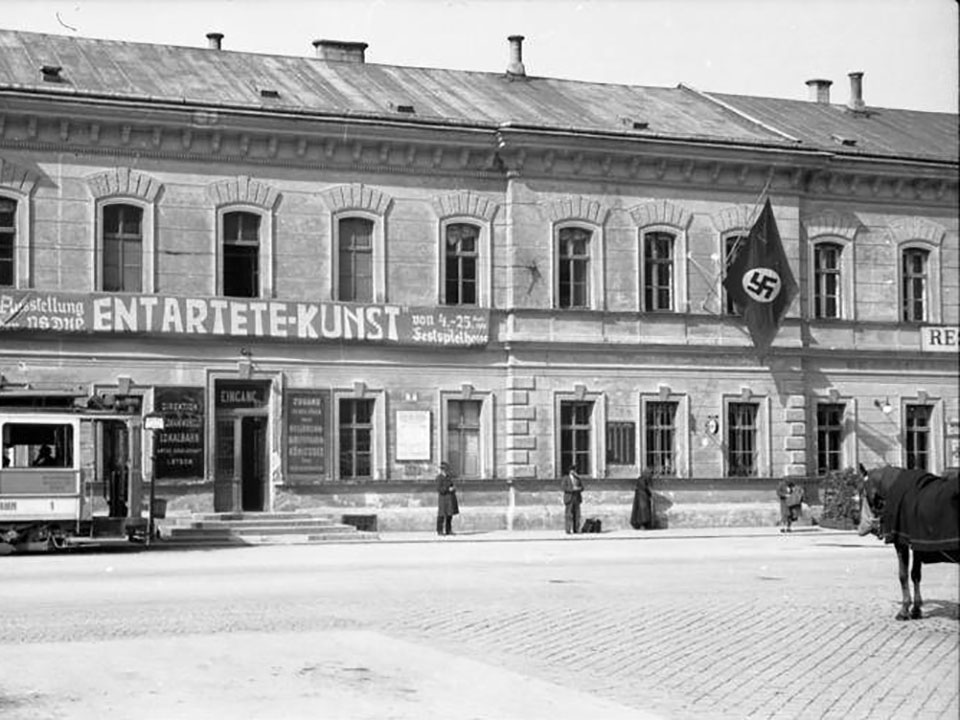
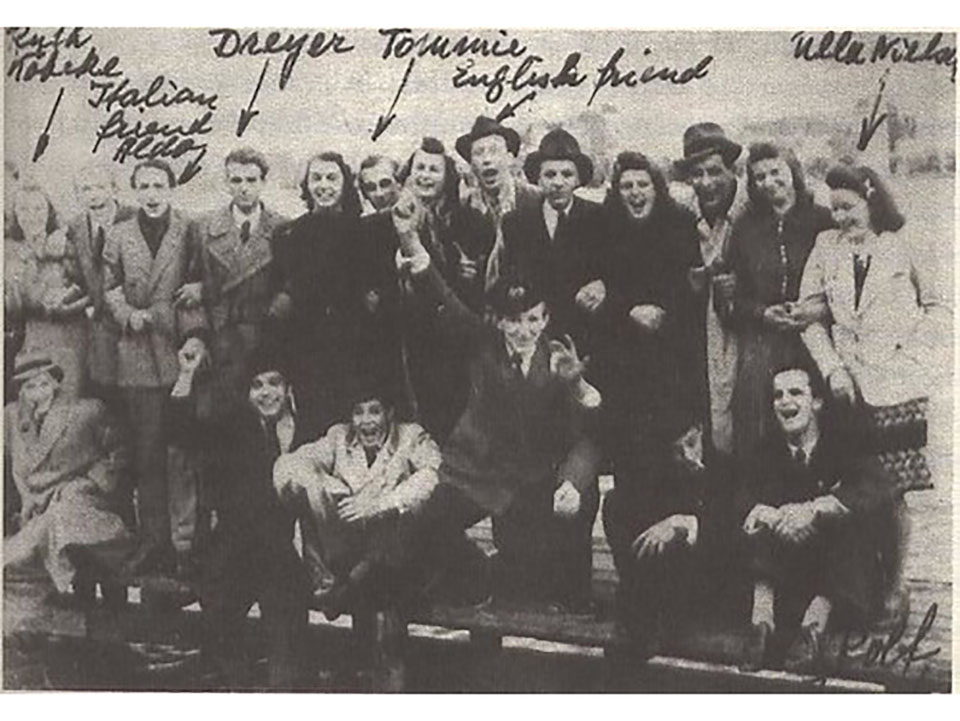
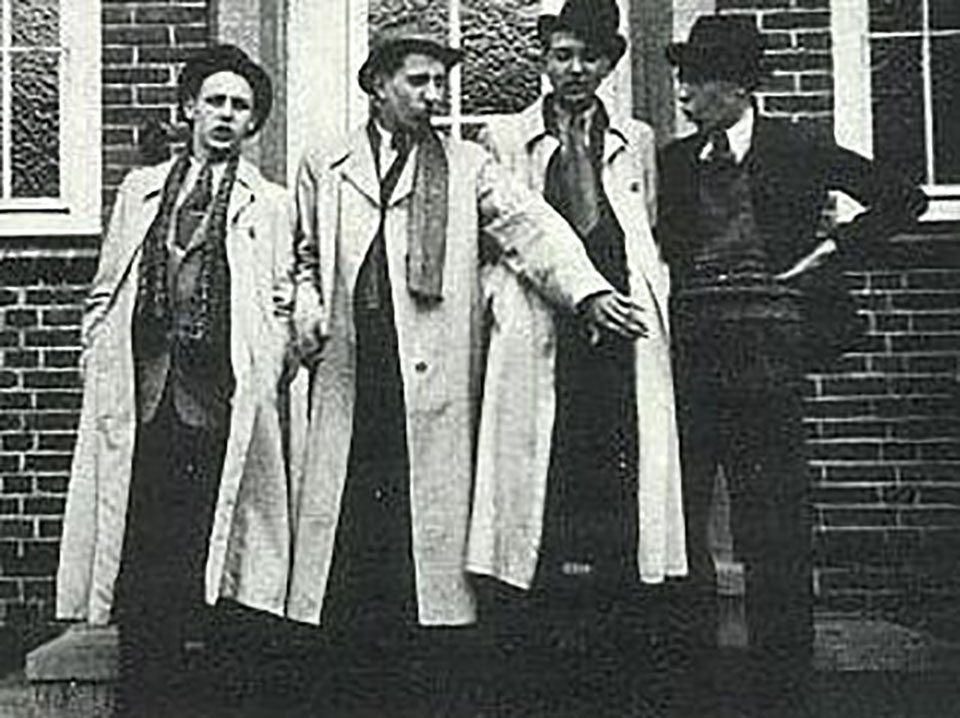




![Max Fuchs, New York City cantor, sings as Rabbi Sydney [sic] Lefkowitz, Richmond, VA, conducts the first Jewish services from Germany.](/sites/default/files/styles/max_650x650/public/2025-10/image1.jpg)



